Publications on People Who Inject Drugs (PWID)
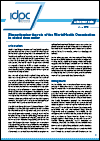
In this advocacy note, IDPC discusses the WHO’s strategic role in drug policy, including progress made and ongoing gaps and challenges, and calls on the WHO and its governing bodies to engage in a more progressive and systematic way in various aspects of global drug policy to ensure more coherence with the UN system on drug policy, health, human rights, and the achievement of the Sustainable Development Goals.
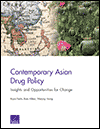
Countries in Asia have typically addressed illicit drug supply and use with harsh punishments, including compulsory treatment and the death penalty. The region has long espoused the goal of creating a drug-free society, a goal that has been abandoned in other parts of the globe for being infeasible.
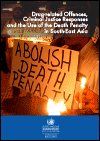
This report is based on a desk review of United Nations and open-source material on the death penalty, including OHCHR studies and United Nations resolutions and human rights mechanisms. It builds on material from the 2018 Bangkok seminar. This report also presents recent global trends in death penalty and drug-control matters, a summary of the applicable international human rights norms and standards, and recent developments in legislation and criminal justice responses related to the death penalty and drug control in South-East Asia.

The guide is intended for use by policymakers, programme managers and service providers, including community-based organizations, at the national, regional or local levels, who undertake to address HIV prevention, treatment and care. It also provides useful information for development and funding agencies and for academia.

The World Drug Report 2019 is again presented in five separate parts that divide the wealth of information and analysis contained in the report into individual reader-friendly booklets in which drugs are grouped by their psychopharmacological effect for the first time in the report’s history.
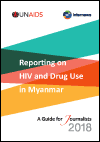
The media has a critical role to play in correcting the myths surrounding drug use that has for decades, helped create an environment of misunder-standing, distrust and discrimination against people who use drugs. Drugs change the structure of the brain and how it works12 and yet drug use is seldom reported as a health problem.

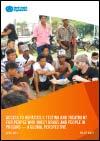
WHO estimates that 71 million people worldwide were chronically infected with hepatitis C virus (HCV) in 2017. Globally, 23% of new HCV infections and one in three HCV deaths are attributable to injecting drug use (PWID). HCV is also a major concern for people detained in prisons and other closed settings – available data demonstrate that one in four detainees are HCV positive.
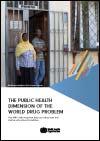
The world drug problem has multiple public health dimensions encompassing vulnerability to drug use disorders and dependence, treatment and care of people with drug use disorders, reducing harm associated with drug misuse, and access to controlled medicines for medical pain relief.
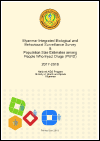
This report presents the results of the 2017-18 Integrated Biological and Behavioural Survey (IBBS), among people who inject drugs (PWID) in selected sites in Myanmar, including a formative assessment and population size estimations. A formative assessment was conducted in September 2017 in each site to inform the implementation of the IBBS. The assessment was conducted to assess the particulars of PWID populations in each setting, to provide information to tailor RDS and PSE methods and logistic approaches to the different PWID population and epidemic context.





